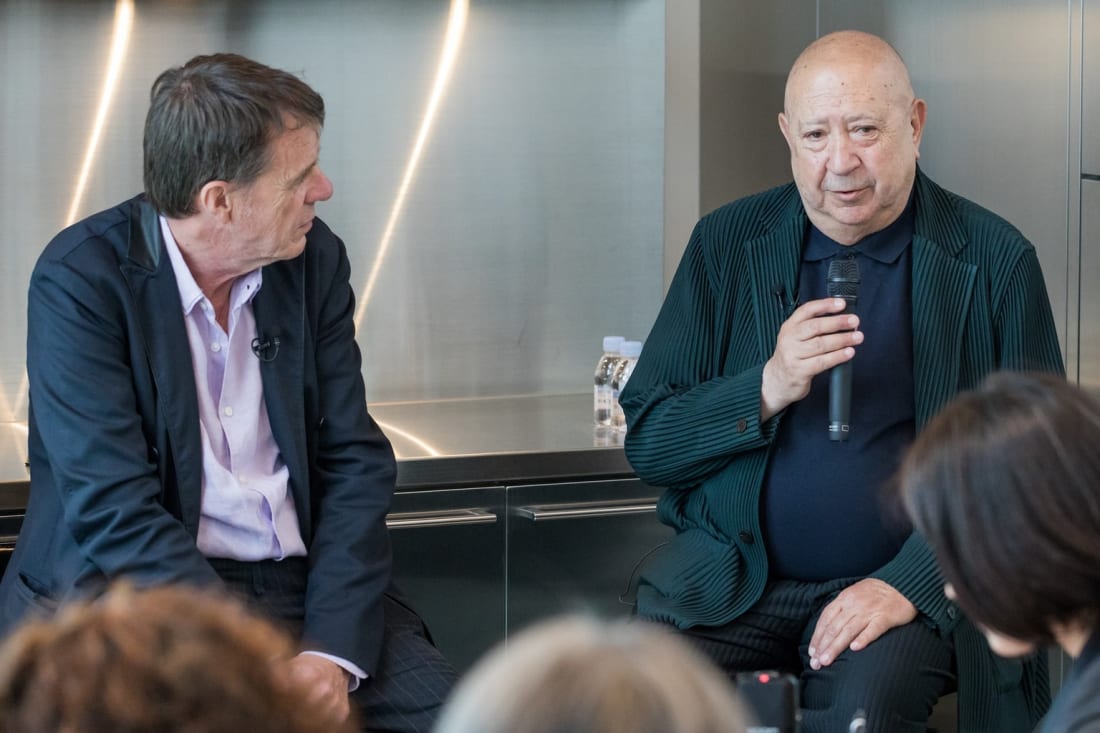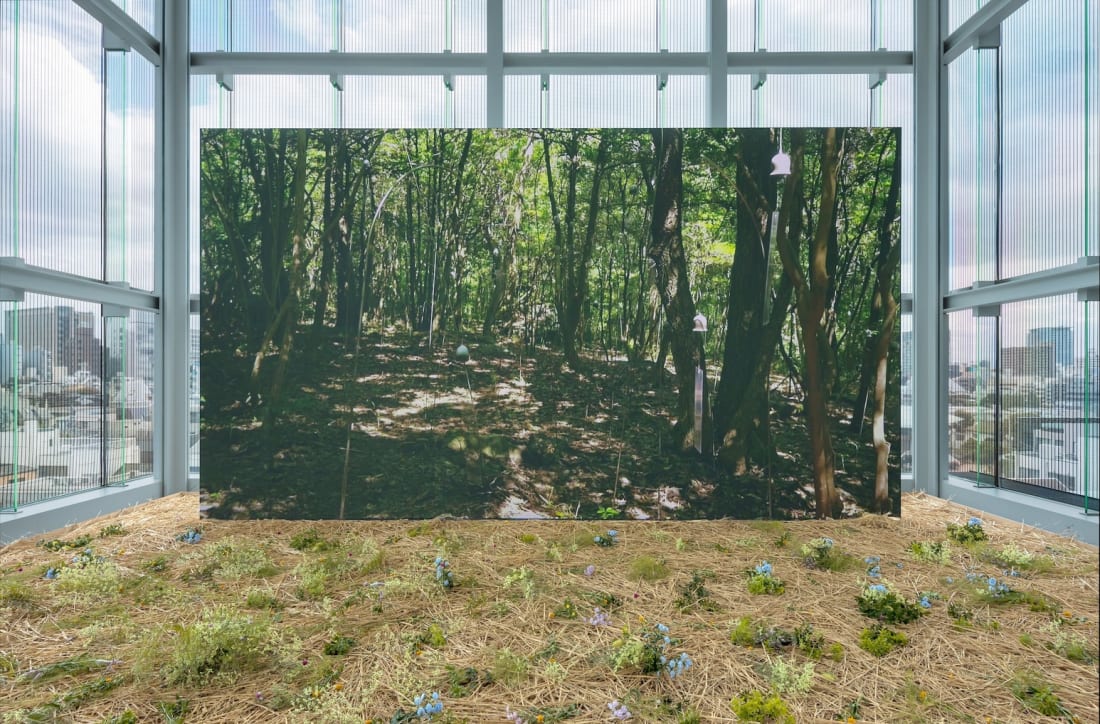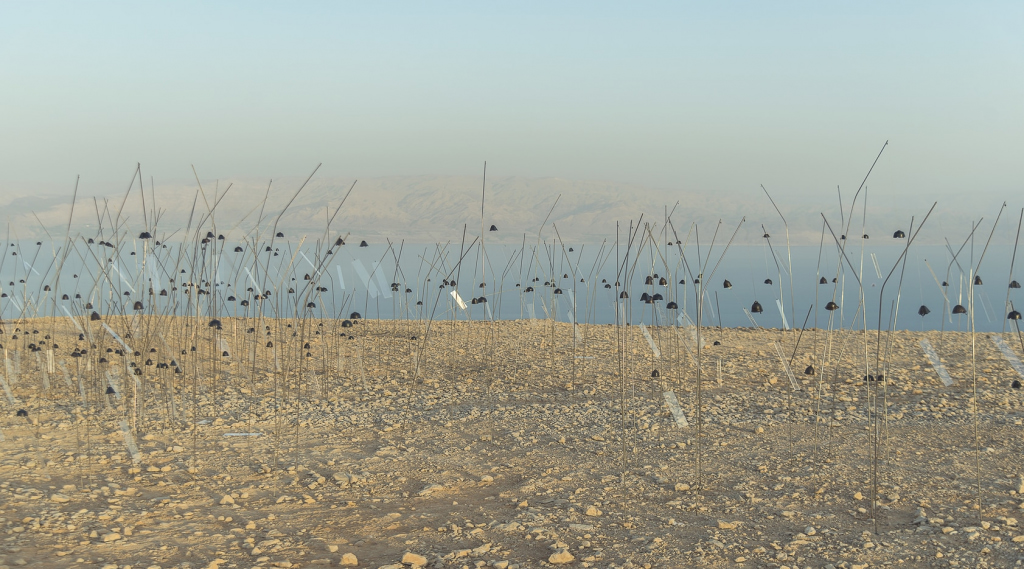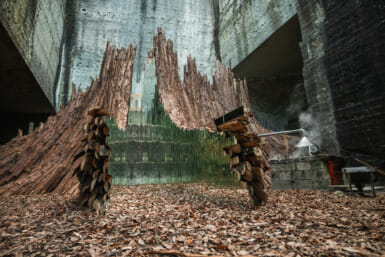Christian Boltanski, face weathered, liver spots adorning his bald pate, like Alfred Hitchcock in slip-on shoes, sits on a wooden bench quietly contemplating the forest scenery in front of him for a minute before a gaggle of Japanese admirers in white skirts and pearls descends upon the man considered France’s most significant living artist.
Boltanski, 74, unveiled his latest installation – and his most ambitious project in recent years – at Espace Louis Vuitton Tokyo this month. For the project, titled Animitas II, Boltanski converted the seventh-floor art gallery in upscale Omotesando into his grand vision of a roadside tribute to the dead.
“All my life I have tried to fight against the fact of dying,” Boltanski once said. “And being forgotten.”

Photo: Jeremie Souteyrat ©Louis Vuitton
A Born Natural
The day Boltanski was born in Paris – September 6, 1944 – Allied troops were forcibly liberating France from German occupation. During World War II his Jewish father hid under the floorboards as his mother convinced interrogators the couple had separated. Through the stories of friends and family young Boltanski was exposed to the revelations of the atrocities of Nazi concentration camps, which would impact the rambunctious child’s future artwork.
Boltanski, who dropped out of school at age 12, taught himself to draw and paint, and never received formal training. He says he considers himself a painter first, but it was his avant garde films that gained attention in the 1960s. Since 1967 he became known for his installation work combining writing, film, sculpture and photography. For his gripping installations, he arranges, modifies and manipulates collections of seemingly mundane photographs, newspapers, clothes and other objects to evoke emotional intensity.
Boltanski’s work obsesses with faded memories and moments in time lost to oblivion, and as such, he says the majority of the work he produces will erode away, immortalized only by snippets of video.
For his celebrated 1986-1987 work, Altar to the Chases High School, Boltanski enlarged photographs of the 1931 graduating class of a Viennese high school and hung them above a stack of rusted, tin blocks with light installations that both reflected and obscured the faces of the Jewish students who likely perished in concentration camps.
From 2008 Boltanski began collecting more than 100,000 recordings of human heartbeats from around the world, and his installation The Heart Archive is permanently housed at Japan’s Benesse Art Site Naoshima on the small island of Teshima. Just last year he added 3,700 heartbeats from Latvia to the archives.
For perhaps his most ostentatious project, Boltanski made a bet with a Tasmanian gambler – and museum owner – that Boltanski wouldn’t die before 2018. A camera was set up in Boltanski’s studio in the Paris suburban commune of Malakoff and the feed was livestreamed 24-hours-a-day to a screen set up in a grotto at Tasmania’s Museum of Old and New Art. Even though the artist is still alive and well, and the wager has been paid off, the cameras still roll.
“Through art I can touch the hearts of people that are far away,” Boltanksi tells the packed house at Espace Louis Vuitton Tokyo. “Even long after my life is over.”

ANIMITAS (LA FORÊT DES MURMURES), JAPAN, Exhibition view at Espace Louis Vuitton Tokyo, 2019, Full HD video, colour, sound – 12 hours 52 min 21 seconds, Courtesy of the Fondation Louis Vuitton Photo: Jérémie Souteyrat © Adagp, Paris 2019
The Precarious Nature
The Fondation Louis Vuitton brought Boltanski’s latest installation, Animitas II, to Espace Louis Vuitton Tokyo through the Hors-les-mors program. The two films on display, Animitas (La forêt des murmures) and and Animitas (Mères mortes) are the last two chapters of the Animitas series.
The two films are projected on screens, erected on opposing ends of the gallery, each running the length of the room. The floor is matted with a layer of hay scattered with purple thistles and roadside brush. A walking path dissects the installation, where two wooden benches set. This is where we find Boltanski catching a minute of solitude.
The screen he watches is a 13-hour loop of a forest scene he filmed from sunrise to sunset on Teshima, the island that has been inhabited for 14,000 years, and is now home to the Teshima Art Museum. It also earned notoriety in the 1980s for a scandal in which a company illegally dumped hundreds of thousands of tons of toxic waste on the island’s western tip.
Behind Boltanski runs a 10.5-hour loop of a scene he shot on the rocky shore of Israel’s Dead Sea. The Biblical sea, whose water level is dropping by 3m per year, was home to the world’s first health spa – as well as Sodom and Gomorra – and Aristotle once rhapsodized about its remarkable waters.
At each location Boltanski posted 300 slender rods in the same pattern as the star alignment from the night he was born. Fascinated with the aesthetics of Shinto and other indigenous religions, Boltanski hung Japanese bells from the end of each stalk. The sound of the tinkling bells, or the “music of the souls,” is piped into the gallery along with the chirps of birds and insects.
Long translucent strips hang from each bell, resembling the Japanese prayer sheets found at Shinto shrines. Wavering in the wind, the rays of sunlight reflecting through the strips dart about the forest floor like fleeting memories.
It is as if Boltanski, for one moment, is watching a documentary of his life, and impending death, and the memories and events that intersected, collided and disintegrated in the time since that September day circa Paris 1944.
Christian Boltanski: Animitas II is on display at Espace Louis Vuitton Tokyo through November 17. Find out more on our event listing.
Feature image: ANIMITAS (MÈRES MORTES), DEAD SEA, ISRAEL. 2017. Full HD video, colour, sound – 10 hours 33 min. Courtesy of the Fondation Louis Vuitton © Adagp, Paris 2019









